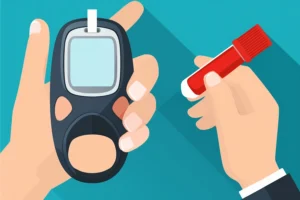Modern medicine has made remarkable progress, offering advanced treatments and innovative therapies for various diseases. Yet, despite these advancements, many patients fail to achieve the expected health outcomes. The reason is often not the lack of effective treatments but rather poor adherence to prescribed medications and medical advice. Non-adherence remains a significant challenge in healthcare, leading to worsening conditions, increased hospitalization and even treatment failures. While doctors and healthcare technologies strive to provide the best possible care, the ultimate success of any treatment largely depends on the patient’s commitment to following medical instructions.
In this article, we will explore what non-adherence is and why it happens.
What is Medication Adherence?
Medication adherence refers to how well a patient follows their prescribed medication regimen. It includes two key aspects:
a. Taking medications as prescribed – This means following the correct dosage, frequency, and timing, such as taking a medicine twice daily, with food or at a specific time. Deviating from these instructions, such as skipping doses or taking extra, can affect the medication’s effectiveness and safety.
b. Continuing the prescribed treatment – Some conditions require long-term medication use, but many patients stop taking their medicine once they start feeling better or due to side effects. This premature discontinuation can lead to worsening symptoms, relapses or complications.1
Types of Medication Non-Adherence
Non-adherence is a complex issue that can take many forms including never starting medication, stopping it prematurely or using it incorrectly by patients. The overlap between these types can further exacerbate the negative outcomes of medication non-adherence. Some of the reasons why patients may not follow their prescriptions include:
1. Primary Non-Adherence (Non-Fulfillment Adherence): Primary non-adherence occurs when a healthcare provider prescribes medication, but the patient never fills or initiates the treatment. This means the prescribed drug is never obtained from the pharmacy by the patient, resulting in a complete lack of treatment.2 Common reasons for primary non-adherence include financial constraints of patients that make medications unaffordable, lack of understanding about the importance of prescribed medication, concerns about side effects or dependency leading to hesitation in starting treatment and poor communication between the patient and healthcare provider, resulting in uncertainty or doubts about the medication.
2. Non-Persistence: This type of non-adherence happens when a patient starts taking the medication but stops it prematurely without medical advice. Unlike intentional non-adherence, non-persistence is often due to miscommunication between the patient and the healthcare provider rather than a deliberate decision.2 Common reasons include lack of proper follow-up with the healthcare provider, the patient mistakenly believing that the treatment is no longer needed, difficulty in managing side effects and adverse reactions without guidance and lack of expected benefit from the medication.
3. Unintentional non-adherence: It occurs when barriers prevent patients from following their treatment plan, despite their willingness to do so. That means, this type of non-adherence is not a conscious decision but rather happens due to external factors that interfere with the patient’s ability to adhere to the prescribed regimen.2 Some of the common causes are access issues like difficulty in obtaining prescriptions and high medication costs, forgetting to take medication on time which can be due to busy schedules. complex medication regimens such as multiple drugs that are difficult to follow, cognitive impairments like memory problems in elderly patients and improper medication use like poor inhaler technique, difficulty swallowing pills often due to a lack of knowledge on how to properly use the medications.3
I4. Intentional Non-Adherence: Intentional non-adherence refers to a process in which the patient actively chooses not to follow the prescribed treatment or recommendations. This decision often reflects a rational thought process, where the patient weighs the potential benefits and risks of the treatment. Common reasons include fear of side effects or adverse drug reactions, concerns about long-term drug dependency, doubts about the effectiveness of the medication, social stigma especially in case of mental health medications, masking of other diseases and preference for alternative treatments.3
5. Non-Conforming Adherence: Non-conforming adherence includes any deviation from the prescribed medication regimen which means the patient is not taking the medication as directed.2 Some of the examples includes skipping doses intentionally or accidentally, administration of medicines at incorrect times like taking a once-daily drug twice a day or taking a medication meant to be taken before food after meals, taking an incorrect dose and overuse of medication, such as taking more than prescribed in an attempt to feel better sooner.
Conclusion:
Medication adherence is a critical factor that directly impacts the effectiveness of treatment plans and overall patient health outcomes. Addressing the various challenges that influence adherence enables healthcare providers to implement comprehensive strategies that enhance patient compliance and improve clinical results. A multifaceted approach is essential for improving medication adherence. Healthcare providers must be well-informed, empathetic, and proactive in educating patients, fostering clear communication, and building strong provider-patient relationships. At the same time, patients need the knowledge, support, and encouragement to understand the significance of following their prescribed treatment regimens. Additionally, overcoming barriers such as medication side effects, high costs, and complex dosing schedules can significantly improve adherence. Policy reforms that enhance medication affordability and accessibility, along with innovations in drug formulations, further contribute to better compliance.4 Ultimately, the success of any treatment depends not only on healthcare providers but also on patients’ active participation and commitment to their prescribed therapies. By working together, we can bridge the gap between advanced medical treatments and patient adherence, leading to better health outcomes for all.
References:
- Michael, Chris L. Bryson, John S. Rumsfeld. Medication Adherence: Its Importance in Cardiovascular Outcomes. Circulation. June 2009;119:23. https://www.ahajournals.org/doi/full/10.1161/CIRCULATIONAHA.108.768986
- Jimmy B, Jose J. Patient Medication Adherence: Measures in Daily Practice. Oman Med J 2011 March; 26(3):155-159. https://pmc.ncbi.nlm.nih.gov/articles/PMC3191684/
- Hugtenburg JG, Timmers L, Elders PJ, Vervloet M, van Dijk L. Definitions, variants, and causes of nonadherence with medication: a challenge for tailored interventions. Patient Prefer Adherence. 2013 Jul 10;7:675-82. https://pmc.ncbi.nlm.nih.gov/articles/PMC3711878/#abstract1
- Aremu TO, Oluwole OE, Adeyinka KO, Schommer JC. Medication Adherence and Compliance: Recipe for Improving Patient Outcomes. Pharmacy. 2022; 10(5):106. https://www.mdpi.com/2226-4787/10/5/106




